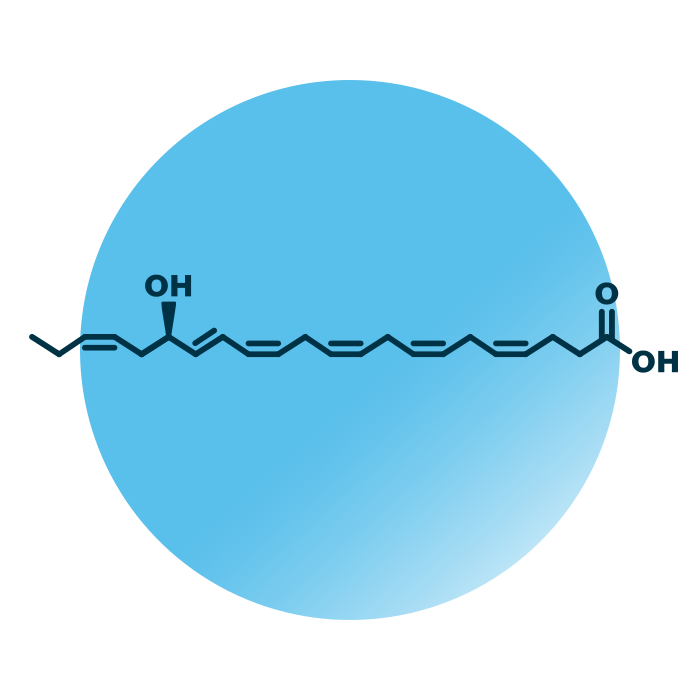About the structure and biological function of oxiDHA
Structure. Oxidized docosahexaenoic acids (oxiDHA) belong to the group of docosanoids within the fatty acyls. Their structure is based on docosanoic acid, a twenty-two carbon atoms long hydrocarbon chain with a carboxyl group. The chain contains six double bonds, from which their name derives. Further, oxiDHAs may further encompass multiple hydroxy groups as well as other oxygen containing substituents.
Function. The biological function of oxidized docosahexaenoic acids is mainly associated with modifying inflammatory responses through interacting with G-protein-linked receptors on the cell surface. They are also believed to impact cognitive and behavioral function in human infants. Further, oxidized docosahexaenoic acids are biosynthetic intermediates to a variety of other docosanoid lipids, and oxiDHA lipids may be responsible for some of the beneficial effects linked to dietary omega-3 fatty acids.
